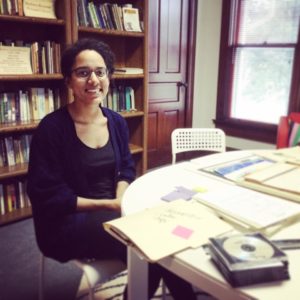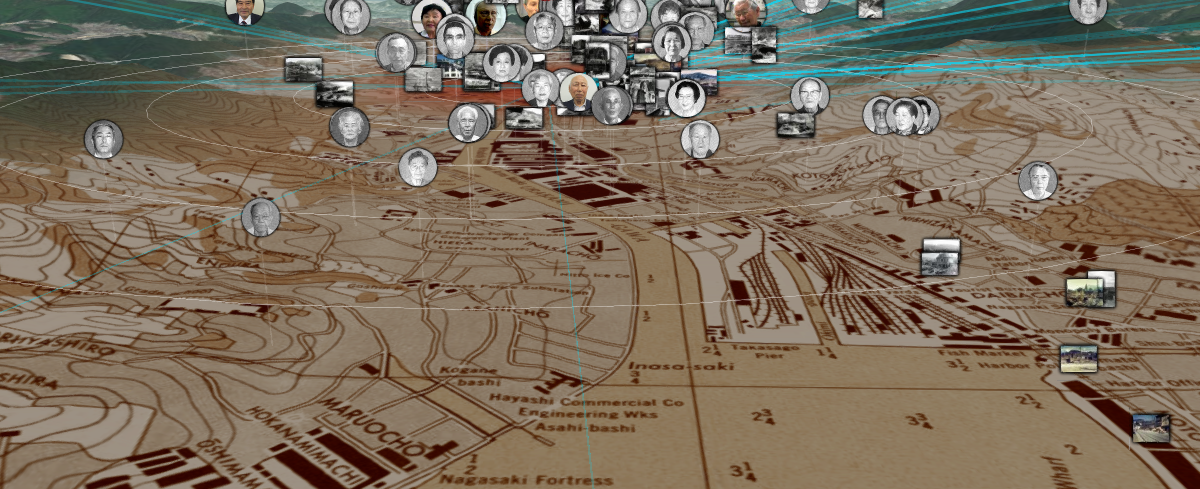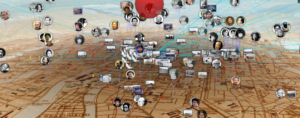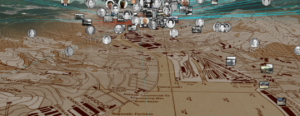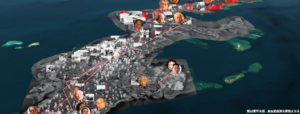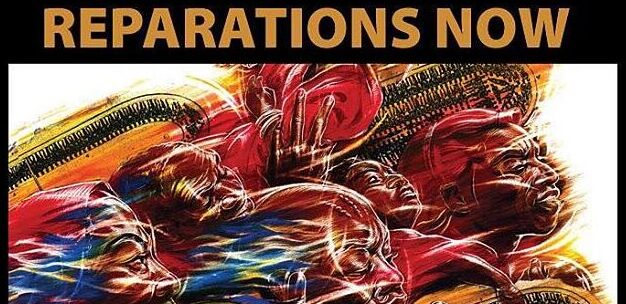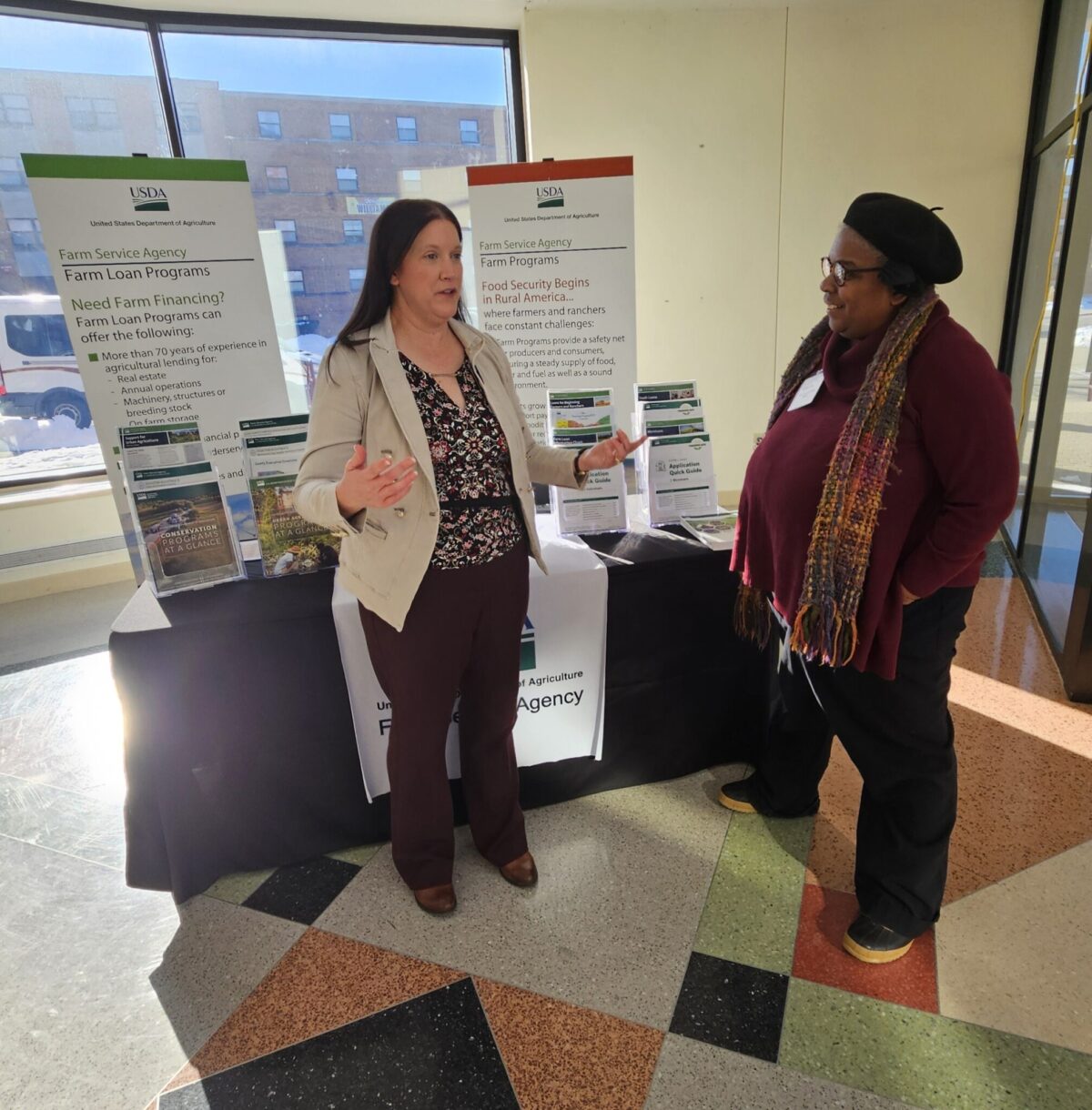My co-op is at the Peace Resource Center in Wilmington, Ohio. The Center is a part of Wilmington College, a bigger-than-Antioch-but-relatively-small Quaker college. The Peace Resource Center was founded in 1975 by Barbara Reynolds, an anti-nuclear peace activist. She was married to an Antioch professor, Earle Reynolds. In the 1950s, he went to Hiroshima to study the nuclear bomb’s effects on the growth and development of children. The Reynolds family built a ship, The Phoenix of Hiroshima, and circumnavigated the world between 1954 and 1958. During this period they became peace activists, culminating their voyage by illegally sailing into a United States nuclear test zone. Barbara spent the rest of her life involved in nuclear disarmament and peace activism.
Along with the Barbara Reynolds papers, the Peace Resource Center houses the Hiroshima Nagasaki Memorial Collection. The archive holds materials related to Hiroshima / Nagasaki – highlighting the stories of survivors, and the Peace Movement in Japan. I had little experience with this history before I started this co-op and have gained a lot of knowledge since.
I am living in Yellow Springs. Wilmington is about a 45 minute drive from here. On a typical day, my supervisor Tanya picks me up at 8:30 and we listen to an audiobook and drive to Wilmington. We open the Peace Resource Center and I work on a project. At the beginning of the week, Tanya and I discuss projects I am working on and new ones that I could start. I have done a lot of hands-on organizational work with the archival materials, preparing them for processing. The archives are currently being reorganized and processed adhering to best practices.
Some of projects so far have been:
- Developing a process for accessioning new materials into the collection and writing a guide for future PRC employees
- Accessioning materials using PastPerfect collections management software
- Revising and editing the Center’s new Collections Management Policy
- Creating a workflow for digitization of audio cassettes
- Selecting primary source materials from the archive and doing research for a digital mapping exhibit
One of my favorite parts of co-op was during the second week. Two PhD students from Tokyo, Kenya Tamura and Hiroki Inoue came to Wilmington for a digital mapping workshop. They developed a program where you can create an archive of pictures, videos, or documents, and pin them on a map. The Peace Resource Center has received a grant to create exhibits using this software. Examples of exhibits created using their software can be accessed by clicking on the images below.
There were a few things that I loved about the workshop, mostly having to do with the process and the possibilities of digital mapping. I learned all about the field of “spatial humanities” that I previously didn’t even know existed. I think it is so exciting.
When the graduate students were presenting about how they use their program for education, they talked about how when they were schoolchildren in Hiroshima an atomic bomb survivor would come into the classroom and talk to the class, or a teacher would talk to the class – and how all of this created a hierarchy or a separation between the teacher and the student. They talked about how they created a collection with high school students in Hiroshima. They showed the students how to use the software and then the students conducted interviews with survivors. The students and survivors would map the pins together. I just thought it was so nice that it was collaborative and outside of a hierarchical structure, and that it blurs the roles that we expect to have in education. I was excited by this and started to think about how archives in general (whether they are mapped digitally or not) can function as this horizontal and empowering learning resource.

Here is a photo of me learning how to use the software
I am continuing to think about all this as I research and create content for the PRC’s digital exhibits. I am working on one for the Hiroshima Peace Pilgrimage – a 1964 pilgrimage where Barbara Reynolds took two atomic bomb survivors around the world to tell their stories, speak out against the use of nuclear weapons and demand an end to nuclear testing. I am also creating an exhibit for the Voyage of the Phoenix – the Reynolds family’s first trip around the world in their yacht. These exhibits will be used as teaching tools in Ohio high schools. I have been thinking about the state’s education curriculum and standards and considering how a project like this might fit. It has been challenging but fun.
This co-op has related to many of my professional goals. I plan to go to get a Masters of Library and Information Science and become a librarian. I enjoy working in archives and the skills are very related to librarianship. In my previous archive job, I worked under an archivist. She was really incredible and taught me so much. I worked with her for a year. At the Peace Resource Center, I have shifted positions. I am no longer working under an archivist and I have more knowledge and experience with archives than my supervisor. In the first week I had to push myself to speak up about more efficient and effective ways to do archival processes. I had to believe in my archival knowledge and be confident enough to name what wasn’t working.
Part of this job has been applying the skills I learned in my previous job, but without someone to tell me whether or not I was doing it right. This has taken some adjusting and I have had to grow more confident in my knowledge and skills. I’ve had to take more initiative researching archival questions I’ve had. In some ways, I have learned more about archival work in this position because I have had to face the things I didn’t know how to do, research them, and figure out how to do them on my own.
